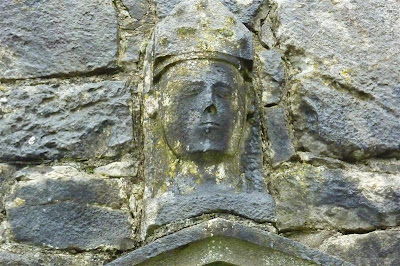On the Yeats Trail and so much more...
Tomorrow we say goodbye to Gort and slowly head back to Dublin. We will be spending three nights in the very center of Ireland with promises of more unique discoveries.
 | |
| I the poet William Yeats with old millboards and sea-green slates. And smithy work from the Gort forge. Restored this tower for my wife George and may these characters remain When all is ruin once again. |
 |
| Kilmacduagh Monastery, established by the 7th century Saint Colman on land given him by his cousin King Guaire Aidne mac Colmáin (died 663 in Ireland) of Connacht. |
 |
| We have learned so much from the people we've met in various places. Yesterday, while at the Clare Museum in Ennis, we met Nelli, a woman who was pretty amazing. She and her husband bought a house here in Ireland and got a few sheep for 'lawn care'. Since there were only a few sheep, no one would come to their farm to shear them, remembering seeing it done when she was a child, she grabbed some shearing scissors and gathered wool the old fashioned way. This lead to a spinning wheel, combined with her childhood lessons in knitting, all led to her current business and fascination with knitting "from scratch". |





1 comments:
Ewe'd be surprised at how promiscuous them sheep are.
Post a Comment